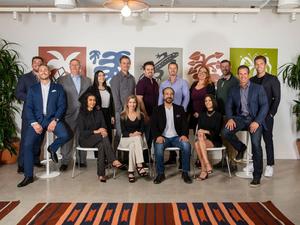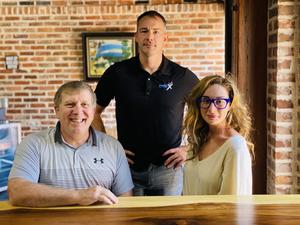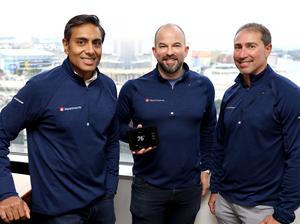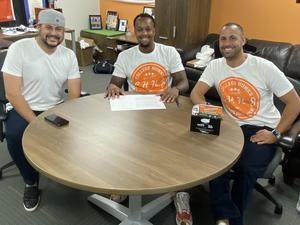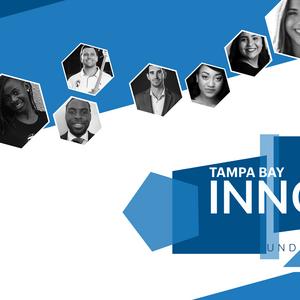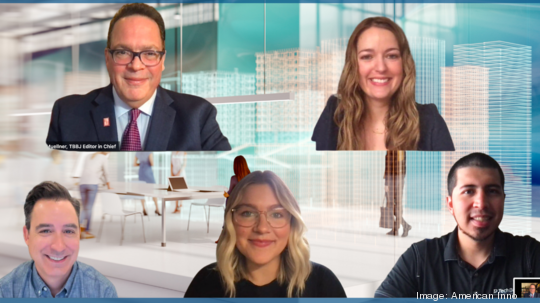
The focus needs to be less on where people work and more about how connected people are to the work, according to Tampa Bay hiring and personnel experts.
"When we talk about this topic, oftentimes we get into the conversation of the place where we work, so you attach words to it like hybrid," said Jason Warnke, senior managing director of global experience at Accenture. "But our CEO uses the concept of an omni-connected experience. It's the concept of being included, connected, regardless of physical location. Location is another dynamic but not the central dynamic."
Warnke, along with Amanda Herring, chief experience officer at livingHR, and Jesus Vidaurri, senior talent acquisition partner at Tech Data, unpacked what it means to work remotely, how to keep company culture in an in-person and remote world, and their least favorite opinions on the future of work below.
Who is an employee of the future?
Jesus: For me, it's someone who is virtual and untethered. It gives us the opportunity to explore what we're about outside the office, as well as inside. It's giving people the opportunity to identify where they're the most successful. The employee of the future won't be attached to one location.
Amanda: The future, and "new norm," is so tough to grab on to so I've been calling it "the now times." I don't think the employee of the future is all that different; the way they show up is different, and the way employers respond is different. Employees have always wanted to feel connected like they belong, feel considered. They not only have been given more of a voice now but feel a sense of obligation to advocate for themselves and others.
Is there anything that can be done 99.9% better in person or remotely?
Jason: Every one of us who thinks this has to be 99.9% in person was proven wrong with the amazing tools that are out there these days. But it's what happens in the spaces, between the activities, that I think is the magic in-person part. That's what will bring people, more often, to physical spaces.
Amanda: To me, it's more the question of what isn't being done well remotely right now, and then asking is that unmoving for some reason, is there a true reason we have to keep it that way, or can it be changed with a culture shift or technology shift? But you do lose a bit of nuance and intent with working remotely.
Jesus: It goes to their needs, and having consistency to say, "We have certain requirements we have in this department," which could be we're meeting with customers every Friday. There is going to be a give and take, but at the same time employers will have to adapt to the requests. It is just part of the conversation now, and it is part of the negotiation and you have to take it into account.
How do you work on digital fluency for employees adapting to this remote technology?
Jason: We always say sometimes the technology is the easiest part — the actual change and adoption is the tougher part and where unfortunately a lot of companies don't pay a lot of focus and skill sets to drive that. We have a team to focus on digital worker change and adoption, so their whole focus is to show what tools are available when to use what tool — and the results have been phenomenal. So people are aware of the tools, and maybe use what's 5% of what's possible, but having a full use case is really important.
Amanda: To me it's really important to focus on the word fluency — a lot of people focus on the digital word and say we gave you the tools, here's the training, now be off and do well. So that fluency word is the more critical word for our team. And show it's more than a one-and-done with these efforts, that leaders are creating more opportunities and check-ins to ask what feels hard and offer continued education and self-guided learning, so you're building the fluency muscle.
Our office is back open but people won't come in but say they miss the sense of culture that comes with working in person. Advice?
Jesus: It's being creative in how we develop that culture and be creative and inclusive how you collaborate on the team. Some may not be comfortable coming into the office, so you have to keep those people in mind. So it becomes that we will go to a bar and hang out, and also keep in mind those at home and maybe have a virtual happy hour. So it's switching on and off and keeping in mind how to include everyone.
Jason: You want to make coming into the office an improvement to what people have experienced and gotten really good at over the last year and a half. We thought the reason people would come into an office is they collaborate, so make that use case amazing where they can come together. People will figure out quickly, "I don't have to come into the office, but when we do those sessions are amazing."
Amanda: I would just reinforce options. People often have terrible recall of what they think they want and what they actually want, so you have to provide options for people to plug back into work camaraderie and in-person opportunities based on comfort, lifestyle and what they need and want. And pulses are super key, to make sure your efforts are doing what you actually want them to do.
To view the entire panel, check out the video below.
